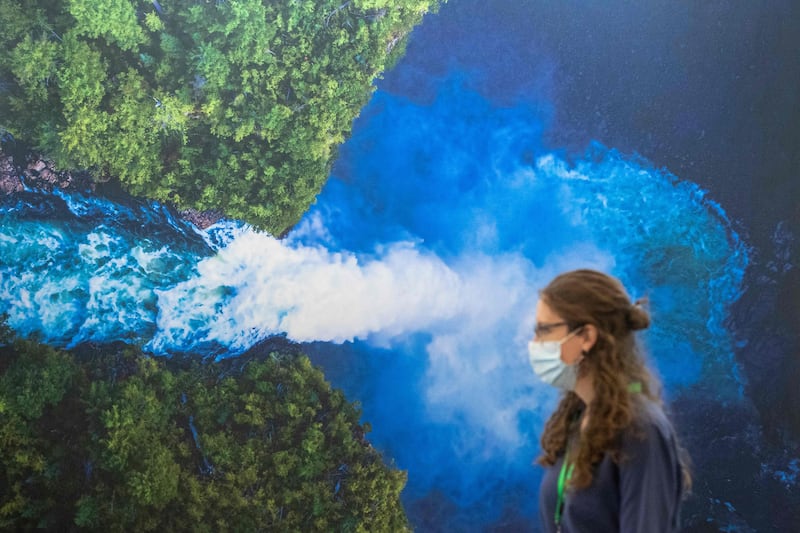A global agreement secured at the Cop15 biodiversity summit in Canada includes new targets to halt and reverse biodiversity loss by 2030 backed by a headline commitment of effectively conserving and managing 30 per cent of the world’s land and water.
The post-2022 global biodiversity framework, agreed in the early hours of Monday after two weeks of intense negotiations chaired by China, has been described as “transformational” and “historic” – in light of decades of failure to address accelerating species loss and deterioration of habitats across the Planet.
The agreement is being regarded by many as a mechanism to transform the global response to the destruction of nature and begin restoration at scale over the next decade.
“Overnight, the world agreed to a ‘Paris Agreement’ for biodiversity! It’s the Kunming-Montreal Global Biodiversity Framework and its goals aren’t expressed in degrees of warming but rather in land and water protected: 30% by 2030 globally,” the leading climate scientist Prof Katharine Hayhoe tweeted.
READ MORE
Commenting on the positive outcome from a meeting that was mired last week in deadlock, especially over funding, Andrew Deutz of the Nature Conservancy said: “If more people grasped the pace, severity and long-term implications of biodiversity loss, the eyes of the world might have been focused on Montreal rather than Qatar over these two weeks.
“Against a backdrop of dramatic ecological declines in the face of human-driven pressures, the world badly needed Cop15 to deliver – and it did just that, scoring a win for people and nature.”

Minster for Heritage Malcolm Noonan, who attended the ministerial segment of Cop15, said: “The world has adopted a new set of goals for nature that will guide our efforts over the rest of this decade, and beyond.”
He paid tribute to the Irish delegation, which, with partners across the EU, helped deliver a historic outcome. “But we all know that the real work begins now. Implementation is where ambition meets impact – on the ground, in the rivers, in the air and across the oceans – and that’s where my focus remains,” Mr Noonan added.
The new global framework outlines an ambitious plan to implement broad-based action “to bring about a transformation in our societies’ relationship with biodiversity by 2030 and ensure, by 2050, the shared vision of living in harmony with nature is fulfilled”, said Dr Deirdre Lynn, Ireland’s head of delegation and biodiversity lead with the National Parks & Wildlife Service (NPWS).
“The world united to broker a deal to halt and reverse biodiversity loss and put nature on a path to recovery for the benefit of people and the planet,” she added.
Biodiversity affects everybody – crossing all boundaries, geographic and political, Dr Lynn said. While Ireland had progressive policies supporting protection and restoration of biodiversity, “many countries will look to this framework to guide them in their efforts to make the transformative changes needed”.
I think the challenge is implementation, it’s always implementation
— Padraic Fogarty, campaigns officer of The Irish Wildlife Trust
The NPWS is drafting the fourth national biodiversity action plan, which will have to align with commitments under the post-2020 global biodiversity framework agreed at Cop15 and with the new EU nature restoration law. A monitoring framework with associated indicators to track progress was also adopted in Montreal, which reinforces the fact that national biodiversity action plans are the main instrument for implementation under the UN Convention on Biological Diversity.
Padraic Fogarty, campaigns officer at The Irish Wildlife Trust, who was an observer at the talks, described the deal as “good”, but said he would not celebrate fully until the necessary changes were implemented.
The “weakest” area of the deal was around consumption and over-consumption, he said. “I think the challenge is implementation, it’s always implementation.”
Mr Fogarty noted many Governments, including Ireland, had ministers for both the environment and agriculture “who are often working against each other when it comes to targets like those agreed at Cop15″.
Some NGOs expressed disappointment at the weaker-than-hoped-for language on consumption and pesticide use, both significant drivers of biodiversity loss. The term “nature positive”, which some scientists had said would be the biodiversity equivalent of “net zero”, did not appear in the agreement.
Alongside the nature targets, countries reached a significant agreement to develop a financial mechanism for sharing the benefits from drug discoveries, vaccines and food products that come from digital forms of biodiversity, known as digital sequence information, after rows about biopiracy in the lead-up to Cop15.















